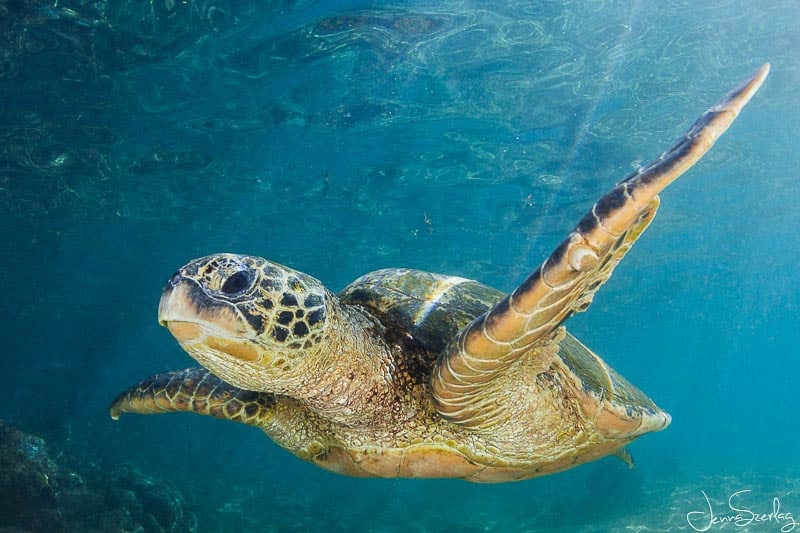Saying Aloha to the Whales
It's that sad time of year when the North Pacific Humpback Whales depart Hawaii. At the time of this writing, the whales are still abundant, but we ...

The scientific name for the green sea turtle is Chelonia mydas, but the Hawaiian name is simply: "Honu." For many snorkelers, these fascinating marine reptiles become the highlight of a good outing. Despite their status as an endangered species, there are relatively common sightings around the coral reefs in Hawaii waters. Whether you join us aboard a Molokini snorkel tour or a Lanai snorkel tour, your odds of spotting one are good. Here are our favorite fun facts about Hawaii's beloved green sea turtles, which we will refer to as Honu.
1. Sea turtles can't retract their head into their shell like their smaller freshwater counterparts.
2. The Honu doesn't get its name from the color of its shell, which is often brown, grey, black or dark olive colored. It gets its name from the color of its skin, or more accurately, subdermal (beneath the skin) body fat.
3. While adult Honu are herbivores with serrated jaws for eating seagrasses and algae, juveniles are omnivores, and dine on insects, crustaceans, worms, sea grasses and many other food sources that are available.
4. Honu grow to around 3-4 feet, but weigh up to 300-350 lbs or more!
5. This species of turtle won't reach sexual maturity until they are between 20 and 50 years old. They've been documented at ages of 80 to 100 years and over. Scientists are still learning about their maturity and age range.
6. A sea turtle's shell is called the carapace, and the underside of the shell is called the plastron.
7. Honu are found around the world in warm subtropical and tropical ocean waters. They've been documented nesting in over 80 different countries. In the U.S., you will find them nesting in Hawaii, Puerto Rico, the Virgin Islands, and the east coast of Florida.
8. Honu habitats are split between the land and the ocean. The land is where they nest, lay eggs, and therefor hatch, while their ocean habitat is where they spend the vast majority of their lives. Since hatchlings rarely survive to reproductive age, most of them only touch land once in their lives, as they make their mad dash from their nest to the ocean.
9. Honu are known to travel long distances to return to their preferred breeding site. Sometimes across whole oceans. When the females are ready to lay their eggs, they climb out onto the beach, so it's important to give them plenty of space if you do see them emerge from the water.
10. The main predators of the Honu are large sharks, especially tiger sharks. But human involvement is a close second, including entanglement in fishing gear, poaching, plastic ingestion, ocean pollution and coastal development. Respect and awareness can go a long way in preventing these dangers for the remarkable Honu.
We hope to see you aboard one of our snorkeling tours soon, and that you'll get some amazing Honu sightings on your outing with us. Mahalo!
It's that sad time of year when the North Pacific Humpback Whales depart Hawaii. At the time of this writing, the whales are still abundant, but we ...
There is nothing more exciting than seeing a 30-ton whale throwing itself out of the ocean like a spinner dolphin on one of our whale watches. Luckil...
When you join us on a whale watch tour on Maui, breaching is one of the common actions you're likely to see. Breaching is when a whale throws its ent...
